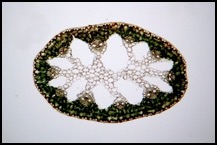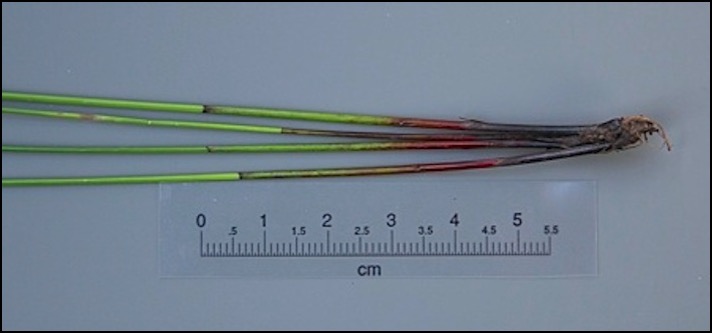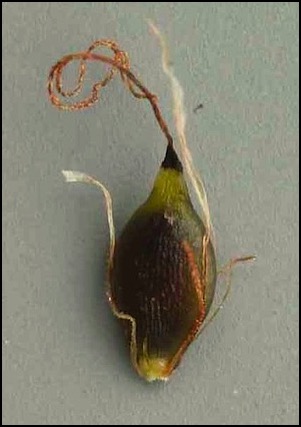[Note: this is a page for the genus Eleocharis.
Select the individual species pages from the ‘Spike-rushes’ dropdown menu above, or the sidebar (look below text on narrow screens).
See also the five ‘ID:’ pages which contrast pairs of species – very useful if you suspect ‘it’s one or t’other’!
Key
Download a simple ⇓Field-key to the seven Eleocharis species (PDF 652 KB).]
The genus Eleocharis (UK species)
Rhizomatous perennial sedges, emergent from shallow or deeper water, or of damp soils.
Growth-forms vary between strongly tufted (e.g., multicaulis), loosely tufted (e.g., quinqueflora), and patch-forming (e.g., austriaca); sometimes making very extensive sheets (e.g., palustris).
Stems circular or somewhat flattened in section, ascending and typically +/- vertical, terminated by a single spike (or spikelet in some sources).
stem sections
E. austriaca

E. multicaulis
There are no ‘leafy shoots’: the remnant ‘leaves’ are reduced to leaf-sheaths on stems (leaf-blades are absent – contrasting with ⇒Trichophorum, where there is a short leaf-blade).

transversely-truncate uppermost sheaths in E. uniglumis
Note that spikelets may – and often do – abort at an early stage of stem-growth, leaving a sterile ‘bare-topped’ stem which may be taken for a ‘leaf’ (and indeed substitutes for one).
The inflorescence is a terminal spike consisting of a number of flowers arranged spirally along an elongated receptacle, each protected behind a single non-enclosing chaffy scale (glume).
There is no elongated basal bract to the spikelet (such as in Carex), the bract(s) being reduced to one, or two, glume-like structures (more rigid than the typical glumes above) one of which itself may in some species shelter a flower.

many-flowered spikelets, upper flowers still with ripe anthers, of E. palustris
much smaller and fewer-flowered spikelet of E. quinqueflora
Flowers are bisexual, with three stamens (the filaments of which are long-persistent), and a stigma forked into either two or three from a longish style.
The stigma/style is usually shed at some point leaving the style-base or stylopodium, important in identification.
The perianth is reduced to a few (0-6) bristles at the base of the ovary, which do not elongate after flowering (unlike in the cottongrasses – Eriophorum – in which the bristles make the familiar head of ‘cotton’ in fruiting).
These bristles arise from a narrow collar at the base of the nut, and have numerous minute rear-pointing hooks, which distinguish bristles from the persistent filaments (see pictures below).
The fruit is a bare nut, topped by the persistent style-base (stylopodium) which in some species is confluent with the nut (e.g., quinqueflora, upper), and in others is enlarged with a distinct ‘neck’ above its junction with the nut (e.g., palustris, lower).
nuts
E. quinqueflora: confluent style-base (style retained in this pic), whitish filaments, brown bristle
E. palustris: 'necked' style-base (style missing in this pic), 3 long and broad filaments, 4 bristles with minute hooks
Links to the other Eleocharis spike-rush pages
Species pages
Separation of similar pairs
Other information
